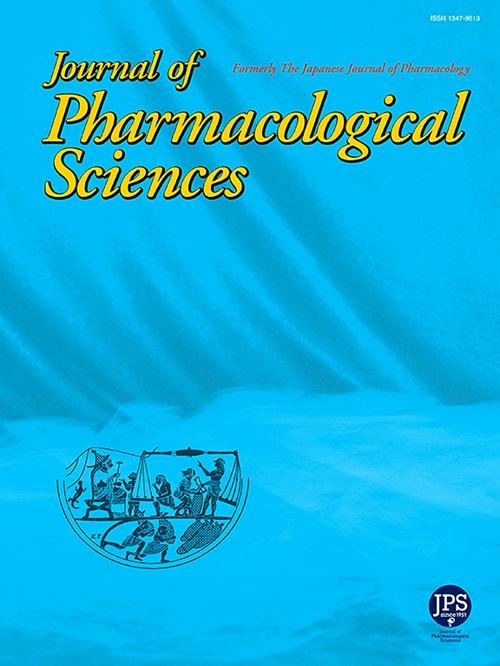Rehmannioside A promotes the osteoblastic differentiation of MC3T3-E1 cells via the PI3K/AKT signaling pathway and inhibits glucocorticoid-induced bone loss in vivo
IF 2.9
3区 医学
Q2 PHARMACOLOGY & PHARMACY
引用次数: 0
Abstract
Glucocorticoid-induced osteoporosis (GIOP) is a widespread disease characterized by low bone density. There remains a lack of effective means for osteoporosis. Rehmannioside A (ReA), an iridoid glycoside, exhibits various pharmacological activities. This study aimed to explore the role and mechanism of ReA in osteogenic differentiation of osteoblasts. Cell viability, reactive oxygen species (ROS) generation, and cell apoptosis were assessed using corresponding assay kits. Real-time quantitative polymerase chain reaction, Western blotting, and alkaline phosphatase (ALP) staining were performed to evaluate the osteogenic differentiation of MC3T3-E1 cells. Alizarin red S staining was used to assess the mineralization of MC3T3-E1 cells. Protein expression associated with the phosphatidylinositol 3-kinase/protein kinase B (PI3K/AKT) signaling pathway was analyzed using Western blotting. Micro-computed tomography, histopathological, and immunohistochemical analyses were performed to determine the therapeutic effect of ReA on GIOP in vivo.The results showed that ReA promoted the osteogenic differentiation of MC3T3-E1 cells by regulating the PI3K/AKT signaling pathway and protected mice against glucocorticoid-induced bone loss by promoting osteoblast-mediated bone formation in vivo. The findings of the current study revealed that ReA is a potential therapeutic agent for osteoporosis.
地黄甙 A 通过 PI3K/AKT 信号通路促进 MC3T3-E1 细胞的成骨细胞分化并抑制糖皮质激素诱导的体内骨质流失
糖皮质激素诱导的骨质疏松症(GIOP)是一种以骨密度低为特征的广泛疾病。目前仍缺乏治疗骨质疏松症的有效方法。Rehmannioside A(ReA)是一种鸢尾甙,具有多种药理活性。本研究旨在探索 ReA 在成骨细胞成骨分化中的作用和机制。使用相应的检测试剂盒对细胞活力、活性氧(ROS)生成和细胞凋亡进行了评估。对 MC3T3-E1 细胞的成骨分化进行了实时定量聚合酶链反应、Western 印迹和碱性磷酸酶(ALP)染色。茜素红 S 染色用于评估 MC3T3-E1 细胞的矿化情况。用Western印迹法分析了与磷脂酰肌醇3-激酶/蛋白激酶B(PI3K/AKT)信号通路相关的蛋白质表达。结果显示,ReA 通过调节 PI3K/AKT 信号通路促进 MC3T3-E1 细胞的成骨分化,并通过促进成骨细胞介导的体内骨形成保护小鼠免受糖皮质激素诱导的骨质流失。目前的研究结果表明,ReA 是一种潜在的骨质疏松症治疗药物。
本文章由计算机程序翻译,如有差异,请以英文原文为准。
求助全文
约1分钟内获得全文
求助全文
来源期刊
CiteScore
6.20
自引率
2.90%
发文量
104
审稿时长
31 days
期刊介绍:
Journal of Pharmacological Sciences (JPS) is an international open access journal intended for the advancement of pharmacological sciences in the world. The Journal welcomes submissions in all fields of experimental and clinical pharmacology, including neuroscience, and biochemical, cellular, and molecular pharmacology for publication as Reviews, Full Papers or Short Communications. Short Communications are short research article intended to provide novel and exciting pharmacological findings. Manuscripts concerning descriptive case reports, pharmacokinetic and pharmacodynamic studies without pharmacological mechanism and dose-response determinations are not acceptable and will be rejected without peer review. The ethnopharmacological studies are also out of the scope of this journal. Furthermore, JPS does not publish work on the actions of biological extracts unknown chemical composition.

 求助内容:
求助内容: 应助结果提醒方式:
应助结果提醒方式:


